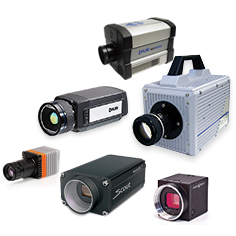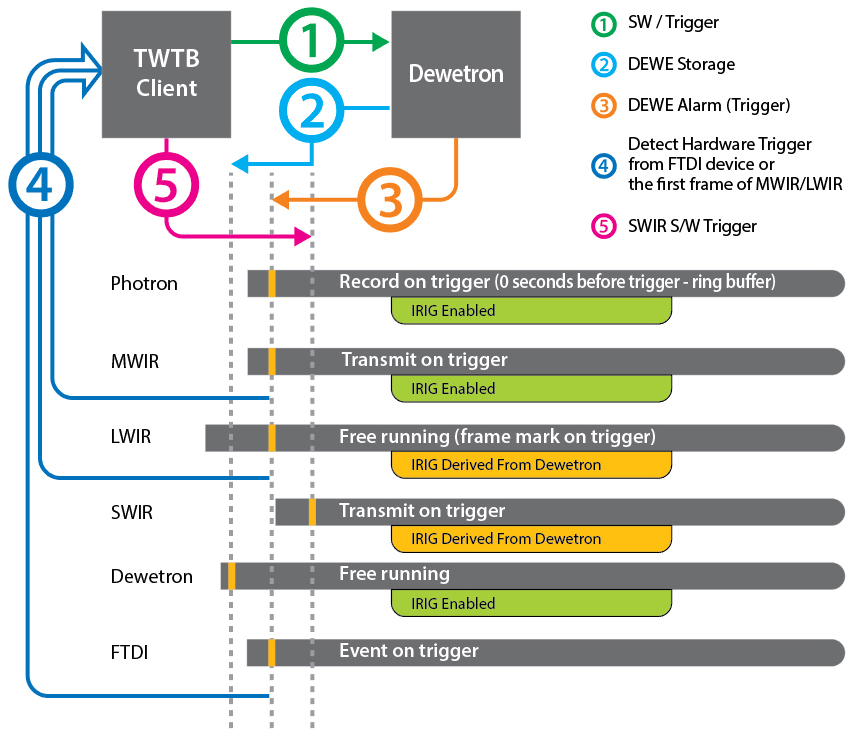- FLIR SC6000 / SC6100 (MWIR)
- FLIR A655SC (LWIR)
- Custom UV Radiometer
- Custom UV Imager
- PointGrey Cameras
- Photron SA-3 High Speed (monochromatic visual)
- Basler Scouts
- Photron APX-RS High Speed (colour visual)
- Xenics Bobcat (SWIR)
elmTEK was engaged by the Defence Science and Technology (DST) Group Cyber & Electronic Warfare Division (CEWD) to develop a cost-effective signature measurement system to be used in EW trials, specifically to collect signature data from various threat sources across the IR, UV and visible spectrum.
The system supports the development of automatic and hybrid Threat Warning (TW) capability with Missile Warning Systems (MWS) and Hostile Fire Indication (HFI) systems. The system was ruggedised to support both indigenous and international trials programs.

Systems Engineering
elmTEK applied a systems engineering approach to the design and implementation of the solution, including:
- Development of bespoke software products;
- Procurement and integration of system components comprising, sensors, data acquisition hardware, RAID servers and switching, IRIG time distribution, power distribution, data/signal cables, hardware mounting and rugged deployable cases;
- Configuration of the Dewetron system used to capture UV Radiometer data and provide GPS referenced IRIG timing source, trigger commands and synchronisation clock signals to the sensors;
- System qualification including Factory Acceptance Test (FAT) and Site Acceptance Test (SAT) activities; and
- Development of engineering documentation and the delivery of training in laboratory and trial environments.

Supported Sensors
elmTEK integrated a number of sensors to the signature measurement system:


Maintaining Strict Time Alignment
Central to signature measurement is the need to synchronise acquired sensor data. This was a challenging prospect due to the wide variety of sensor types; i.e. different OEMs, standards and legacy drivers. Whilst some sensors provided all the necessary features such as trigger input, sync clock and IRIG time input, other sensors provided all, some or none of these features. The final approach used to time align the data is illustrated in the adjacent diagram.
Signal Processing
A Quick Look algorithm was implemented to determine the success/failure of image capture from IR and UV imagers. In addition to this, a saturation detection algorithm was incorporated to provide the operator with a graphical report on the nature and extent of any sensor saturation above the configured threshold values.
OpenCV was chosen to assist in the development of the signal processing algorithms as a mature computer vision product that benefits from continual development and its wide use in academic, scientific and commercial fields. By leveraging the OpenCV library and its implementation of computer vision algorithms, elmTEK was able to reduce development time and focus attention on algorithm evaluation and validation.

